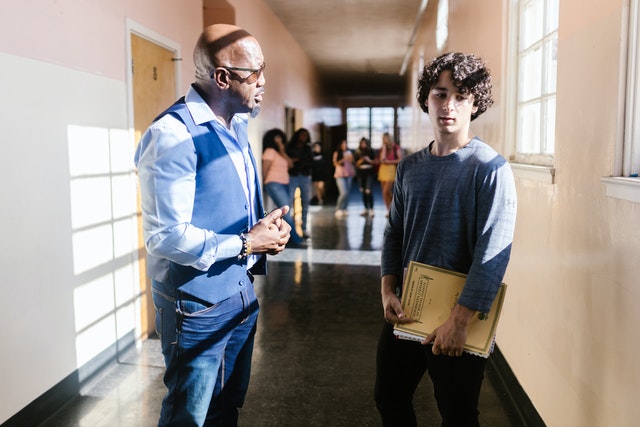How to Build a Trauma-Sensitive Classroom Where All Learners Feel Safe
 Patricia Jennings, associate professor at the University of Virginia and author of the new book The Trauma-Sensitive Classroom, says that childhood trauma can have severe immediate and long-term consequences for students’ cognitive, social and emotional development.
Patricia Jennings, associate professor at the University of Virginia and author of the new book The Trauma-Sensitive Classroom, says that childhood trauma can have severe immediate and long-term consequences for students’ cognitive, social and emotional development.
Trauma and chronic stress change the way our bodies and brains react to the world. Part of that is protective, said Jennings. “Humans tend to adapt to chronic stress in order to be able to survive and thrive in challenging contexts. But these adaptive behaviors can impede success in the classroom context.” In school, children with trauma are more likely to have trouble regulating their emotions, focusing, and interacting with peers and adults in a positive way.
Teachers Can Offer Stability
There is some hopeful news in the sobering research about kids and trauma. “We know enough about the science to know that teachers can make a huge difference,” said Jennings. “The school environment is one of the places where students who are exposed to real challenges at home can find safety and stability.”
Teachers are uniquely positioned to ameliorate some of the effects of early trauma. “The adults in the school environment may be the most stable and mentally well people [some children] have contact with,” said Jennings. “Their teachers can become role models for them for what a healthy adult is like. School can become a sanctuary for kids like this.”
Preschool and kindergarten teachers play an especially important role because children’s early classroom experiences influence their perception of school for years to come.
Building a Trauma-Sensitive Classroom Environment
Let Go of Zero Tolerance: Zero tolerance policies and harsh classroom discipline models can “trigger reactions that amplify feelings of trauma,” said Jennings. Punitive measures can retraumatize children and “reinforce in their mind that the world is a dangerous place, that people don’t like them, and that they are no good.”
Reframe Student Behavior: It’s easy for teachers to take students’ behavior personally or to misinterpret a child’s actions as willful defiance. Jennings said that teachers should “remember that behaviors that are disruptive or unhelpful in the classroom might be self-protective responses to chronic stress.” This perspective can help teachers make a small but powerful mental shift: instead of asking “what’s wrong with him?” ask “what happened to him, and how did he learn to adapt to it?”
Generate and Savor Positive Emotions: Because teachers don’t always know which students are coming to school with traumatic backgrounds – and because they have an obligation to teach all learners – educators “have to consider universal approaches that help everybody and embrace those kids who need it most.” Developing a strong classroom community is foundational to this work.
Draw on the Power of Story: Children with trauma backgrounds need plenty of opportunities to learn about, experience and practice compassion and resilience. Literature is a powerful vehicle to support this endeavor, said Jennings.
Put On Your Oxygen Mask First: In Jennings’ work, she focuses first on helping teachers develop resilience, self-awareness, and self-regulation — and then on how they can teach these tools to children.
She said that teachers need to learn how to manage their own stress that comes with navigating students’ trauma-related behavior.
Excerpted from “How to Build a Trauma-Sensitive Classroom Where All Learners Feel Safe,” published in MindShift, a collaboration between KQED and NPR. Read the full story for additional details on building a trauma-sensitive classroom.
Source: MindShift | How to Build a Trauma-Sensitive Classroom Where All Learners Feel Safe, https://www.kqed.org/mindshift/52566/how-to-build-a-trauma-sensitive-classroom-where-all-learners-feel-safe | Copyright © 2018 KQED Inc.
CHC offers free community education sessions for educators. Join us to learn practical teaching strategies you can use in your classroom to help more kids reach their promise and potential. Educator sessions are led by experienced educator/clinician teams from Sand Hill School and CHC.





